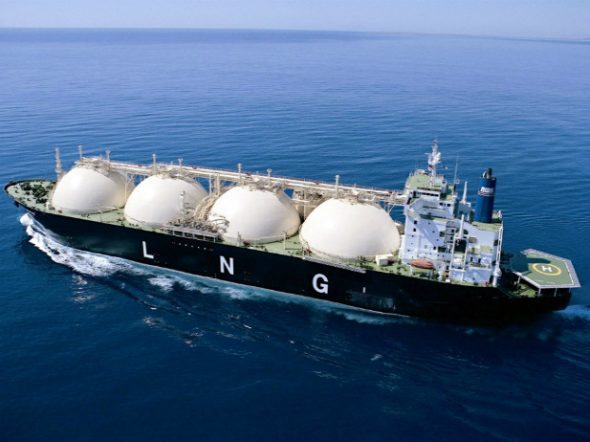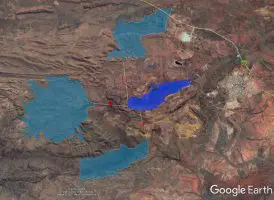The long-awaited energy green paper from the Abbott government is playing to form, focusing largely on Australia’s booming gas industry and how to get more investment into extractive energy resources, so that Australia can become an energy “superpower.”
As the UN meets in New York, and bodies such as it, major investment funds and the World Bank urge a price on carbon and a rapid path to decarbonisation, the green paper makes a virtue of becoming the first country to dump a carbon price.
It also warns against “distorting” subsidies, although this seems focused more on renewables than it does on not accounting for the health and environmental impacts of fossil fuels, which the Climate Institute said today was costing $14-39 billion a year.
To get an idea of where the government sees its priorities, in the four-page executive summary, for instance, gas gets 18 mentions, coal gets four and solar gets just two. Wind energy doesn’t rate a mention. Storage is mentioned once, as is nuclear.
But in the 78-page body of the green paper, gas is mentioned 434 times. Coal is mentioned 100 times, followed by nuclear on 67. Storage gets 32, solar gets 26, and wind energy just 13 mentions.
That certainly doesn’t relate to Australia’s current energy mix, or even the future energy mix. And certainly not the decarbonised energy systems that are advocated by the likes of ClimateWorks, or even the International Energy Association.
As the Australian Conservation Foundation noted, it represents the “quarry” mentality, which explains its current coarse on the renewable energy target. “The paper presents the wrong answers to the wrong questions,” the ACF said. “The government should be asking what Australia’s energy system should look like in 10, 20 and 30 years’ time, then acting with the rest of the world to cut pollution and invest in clean energy.
But it does nothing of the sort, instead reflecting the government’s short term priorities and the basis of its thinking, which is based entirely around extractive fuels and centralised generation.
“Australia has world-class energy resources, and we must ensure that we have the right policy framework to use them to our full advantage, in an increasingly competitive global market,” Industry Minister Ian Macfarlane said in a release accompanying the document.
“The Government is resetting Industry policy in Australia to build on our areas of competitive strength. The energy sector is one of those strengths and the Energy Green Paper will identify the ways in which we can improve the framework surrounding our energy assets.
“Australia has an abundance of energy resources and energy assets. We are well regarded internationally for our diverse range of energy sources and we are supplying increasing volumes of energy commodities to energy-hungry nations in the Asian region.
“We can’t afford to become complacent – Australia must also be the world’s best in how we access and utilise our energy resources.”
The green paper complains about the “barriers” being put up against coal sem gas, saying that the LNG export industry “provides an enormous opportunity for the nation’s economy. But because the conventional resources are nearly exhausted, the industry relies on access to CSG.
“Some states have regulatory and planning barriers preventing needed supply. These barriers are creating potential near-term supply shortages on the east coast, and also increasing prices. Increasing supply is the best way to ease the pressure, it says, although it also notes “increasing prices are nonetheless inevitable.”
The paper recognises, nevertheless, that technology is changing, but it claims it is doing so slowly – contrary to most independent analysis which shows that energy systems will be vastly different within a decade. This excerpt is particularly informative, and reveals how attached the Abbott government is to nuclear, and the continuing dominance of centralised systems, rather than distributed energy.
“Australia’s domestic energy sources are changing slowly, but coal still provides the largest amount of electricity. It is important that coal is used in a way that produces the most energy for the lowest emissions, but this requires major capital investment in a market that is currently oversupplied. Gas provides a lower emissions source of energy for electricity generation, but in Australia, it is increasingly becoming a more expensive fuel source than coal. Nuclear energy remains a serious consideration for future low emissions energy. Renewable energy will continue to play an important role, especially in regional and remote areas that are off the main electricity grid. The development of large-scale energy storage could be a game-changer for renewable energy, because it can smooth the intermittent supply that typifies renewable energy, and reduces the need for reliable baseload energy from other sources.”
Interestingly, the paper notes that changes in energy technologies can emerge quickly, and cites the popularity of rooftop solar. But while ClimateWorks, and even the IEA, have suggested that solar will dominate Australia’s and global energy systems, the green paper leaves it at that.
In a chapter on “electricity supply” – the green paper notes that while a lot of coal plant has only been mothballed, and not retired, it frets about the investment signals for new plant once demand might return in a decade’s time. It even notes that coal fired generators might struggle with water issues at the time of drought, and the gas supply might be absorbed by the export market. Again, there is not a single mention in this chapter of renewables.
It does acknowledge Australia’s dependence on imported liquid fuels, an enormous risk that was highlighted by a recent NRMA report. Again, the green paper says this situation “needs to be monitored” and is focused on alternatives such compressed gas, LNG, and biogas.
It concedes that electric vehicles have an advantage over these alternative fuels, but downplays EVs because of “high vehicle prices, unsophisticated sale and maintenance networks, limited recharging infrastructure, and motorists’ concerns”, such as range anxiety.
It devotes one special appendix to nuclear energy.
In short, this paper is everything it was expected to be – despite its supposed focus on the future, it is looking in the past rather, completely oblivious to global trends, technology costs and the rapid change in energy systems, not to mention the challenge of reducing emissions.









